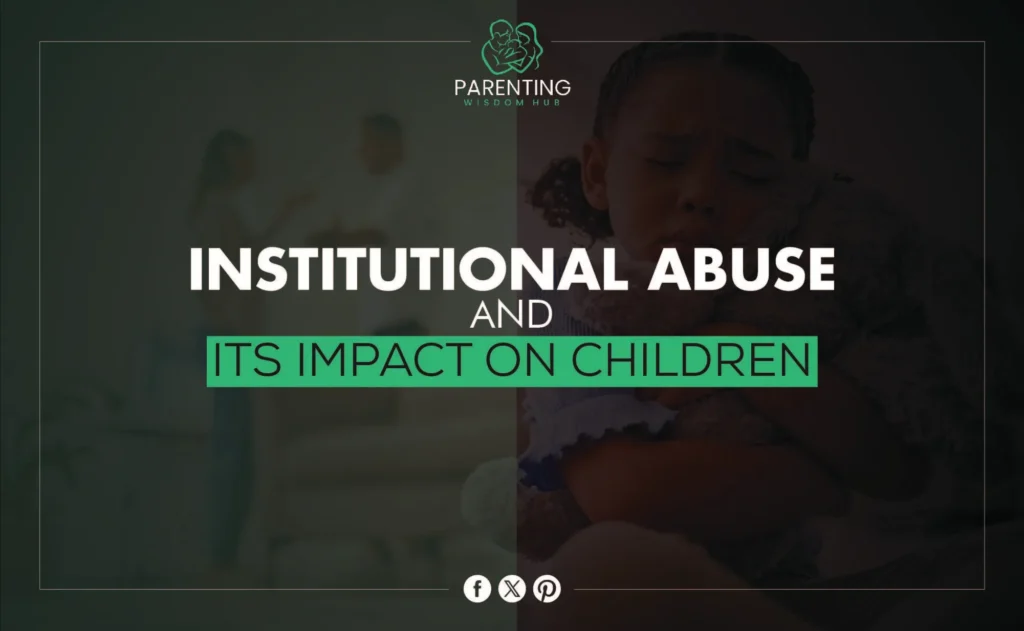Introduction
Schools, orphanages, hospitals, and youth detention camps experience institutional abuse in children. An organization fails to protect the children in its care, making institutional abuse different from domestic abuse. This is usually because of problems with the system, a lack of monitoring, or a culture that allows this behavior.
Parents, teachers, and society as a whole must understand abuse. By spotting warning signs, understanding causes, and advocating for change, we can protect kids and ensure organizations work.
What is Institutional Abuse?
Abuse of children in institutions happens in places that are supposed to care for and protect children. This kind of abuse doesn’t have to be one specific kind; it can be neglect, physical, mental, or sexual abuse.
Institutional child abuse occurs in schools, orphanages, hospitals, and juvenile correctional camps. Teachers, caregivers, and other staff workers often abuse, and systemic failures allow it to continue.
Types of Institutional Abuse
- Physical Abuse: A youngster is physically harmed by intentional force. Physical abuse in institutions may include severe punishment, striking, slapping, or other hostility. For instance, a juvenile detention center employee may physically reprimand a youngster, injuring them.
- Emotional Abuse: Institutional emotional abuse harms children’s self-esteem and well-being. Verbal abuse, threats, intimidation, and humiliation are examples. A teacher may humiliate a child in front of their peers, causing long-term emotional damage.
- Sexual Abuse: A trusted or authoritative person abuses a youngster for sexual purposes in institutions. Sexual assault, inappropriate touching, and forcing a youngster to have sex are examples. A horrific example is the rampant sexual abuse of minors by trusted clerics in religious institutions.
- Neglect: Institutional neglect occurs when children are denied food, shelter, medical treatment, or emotional support. Poor living circumstances and care may result from understaffed or underfunded orphanages, leading to the neglect of children.
Causes of Institutional Abuse
- Lack of Oversight: Many institutions lack outside oversight, which means that cruel behavior can happen without being stopped. When people don’t hold others accountable, attackers may feel free to take advantage of their power without worrying about consequences.
- Inadequate Training: Staff often lack child protection training; thus, they are unaware of abuse indications and responses. Children are at risk when caregivers can’t identify and address difficulties.
- Systemic Failures: Poor reporting processes or staff assistance might contribute to a culture of silence about abuse. This systematic failing prevents victims from reporting abuse and lets offenders get away with it.
- Power Imbalances: Institutional power dynamics can cause abuse. Children feel powerless against authoritative figures, making it hard for them to report abuse or seek aid. This allows abusers to influence and scare victims.
- Cultural Norms: Mistreatment may continue in some organizations because of deeply rooted cultural norms. Demanding rigorous control can make physical punishment seem normal, making distinguishing abuse from appropriate behavior impossible.
Effects of Institutional Abuse
Immediate Effects of Institutional Child Abuse
- Physical Injuries: Physical abuse victims can get a lot of different kinds of injuries, like bruises, broken bones, and other types of damage. These injuries can happen because of direct violence or because guardians use too many punishments.
- Emotional Distress: Children who are abused in institutions have a lot of mental problems, like anxiety, depression, and low self-esteem. The trauma they’ve been through can cause long-lasting mental health problems that affect their general health.
- Social Withdrawal: Affected children may become socially isolated and refuse to connect with other kids or adults in charge. They can experience this because they have formed fear, shame, or mistrust due to abuse.
- Behavioral Changes: Institutional abuse often alters behavior. Attacks, defiance, and other disruptive behaviors may help sufferers cope, while others may become unduly meek to avoid suffering.
- Academic Struggles: Abuse can affect how well a child does in school. Children who have undergone institutional abuse may find it challenging to focus in school, lowering their grades and motivation.
- Attachment Issues: Children who have been abused in institutions may find it hard to form good relationships with adults or other kids. Fear and rejection can make them less likely to trust others, hurting their future relationships and social growth.
Long-Term Consequences of Institutional Child Abuse
- Post-Traumatic Stress Disorder (PTSD): PTSD, which causes flashbacks, anxiety, and uncontrollable thoughts, can develop in institutional abuse victims. Adults with this disease may struggle with daily life and relationships.
- Chronic Health Issues: Abuse can cause chronic pain, gastrointestinal difficulties, and cardiovascular illness. Childhood stress can permanently affect the stress response system.
- Substance Abuse: Institutional abuse survivors may use drugs or alcohol to cope with emotional suffering and unresolved trauma, increasing their risk of addiction and complicating recovery.
- Difficulty in Relationships: Forming and maintaining good relationships is difficult for childhood abuse victims. Trust, intimacy, and abandonment fears can hinder their relationships.
- Mental Health Disorders: Beyond PTSD, survivors are at risk for depression, anxiety, and borderline personality disorders, which can lower their quality of life.
Impact on Society
- Increased Mental Health Issues: Institutional child abuse increases community mental health illnesses, highlighting the need for mental health services and support.
- Strain on Public Resources: Survivors of institutional abuse often need a lot of help, like medical care, housing, and legal help. This puts a lot of stress on public resources and social services.
- Cycle of Abuse: Institutional abuse can lead to more violence because people may act violently in their relationships or with their children, passing on the pain to future generations.
- Erosion of Trust: When a lot of people hear about institutional abuse, they may not trust places like schools, religious groups, and social services. This makes it hard for communities to work together successfully.
- Stigmatization of Survivors: Survivors may face discrimination and stigma because of what they’ve been through, which can make them feel alone and make it harder for them to fit in with society. This makes sensitive groups even less included.
- Call for Legislative Change: As people become more aware of institutional child abuse, they often call for changes to the law that will make child protection laws stronger and hold harmful practices accountable, creating a culture of safety and alertness.
Signs of Institutional Abuse
Physical Signs of Institutional Abuse
- Unexplained Injuries: It’s possible for kids to come in with a lot of bruises, broken bones, or burns that they can’t explain.
- Changes in Weight: Loss or gain of a lot of weight can be a sign of neglect or stress-related problems connected to being in an abusive environment.
- Poor Hygiene: Not caring for their hygiene or medical needs may be a sign of neglect, which is when workers don’t give them the care they need.
- Frequent Illness: Children who are abused may get sick often, usually because they are under a lot of stress or don’t have an excellent place to live.
- Signs of Malnutrition: Physical signs of malnutrition, such as fatigue, low energy, or growth delays, can be signs of poor care.
- Dressed Inappropriately for Weather: Clothing that is clearly too small or too big for the weather may show carelessness or a lack of proper care.
Behavioral Signs of Institutional Abuse
- Changes in Mood: Victims may have significant mood changes, from being very angry to suddenly feeling sad, which shows how upset they are inside.
- Regression: As a way to deal with stress and trauma, some kids may go back to earlier stages of growth, like wetting the bed or sucking their thumb.
- Fearfulness: Children who have been abused show signs of greater fear, especially around people, places, or situations that remind them of the abuse.
- Withdrawal from Activities: Children who are affected may lose interest in usual things like playing with friends or attending school events, which is a sign that they are upset.
- Difficulties with Authority: Survivors may act defiant or hostile toward authority figures because they have been abused and have learned not to trust adults.
- Self-Harm or Suicidal Ideation: In the worst cases, kids may hurt themselves or say they are thinking about committing suicide, which shows how much mental pain they are in and how quickly they need help.
Prevention and Protection Measures
- Education and Training: Require caregivers, teachers, and institutional workers to undergo required training on how to spot signs of abuse and understand children’s rights. This can help create a culture of safety and vigilance.
- Stronger Child Protection Policies: Create and follow thorough policies for protecting children in institutions, making sure there are clear steps for reporting and dealing with suspected abuse.
- Safe Reporting Mechanisms: Encourage open safety communication by providing confidential and accessible reporting channels for children and adults to report abuse without fear of retaliation or skepticism.
- Regular Monitoring and Evaluation: Audit and evaluate institutions regularly to examine their practices and settings, ensure they meet safety standards, and find areas for improvement.
- Community Awareness Campaigns: Start community-based efforts to teach people about the signs of institutional abuse and how important it is to keep children safe. This will encourage people to take action against abuse.
Conclusion
Institutional abuse breaks trust and hurts individuals and communities. The ripple effects affect mental health, public resources, and social cohesiveness beyond the immediate victims. We can make children’s environments safer by recognizing abuse and taking strong preventative measures. Fostering awareness and resilience, supporting survivors, and lobbying for child welfare and accountability legislation is crucial. Let’s end child abuse and create a future where we protect, cherish, and ensure the success of every child.


